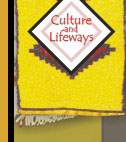 Heritage Community Foundation Presents
Heritage Community Foundation PresentsAlberta Online Encyclopedia
 |
 |
||
|
|
 |
Home | About Us | Contact Us | Partners | Sitemap |
|
|
|
 |
||
   |
|||
|
Fishing Page 1 | 2 The Métis brought their practice and techniques of fishing from both their cultures. The Aboriginals fished the lakes in northern Alberta using nets to catch lake whitefish and lake trout. There is some evidence that they built weirs in the rivers, especially to catch the giant sturgeon. "The Cree, who so recently had left the eastern and northern forests, were still accustomed to eating fish. They used traps woven like coarse baskets, as well as circular fish fences into which fish were driven, much as buffalo were driven into a pound."1 The Ojibwa were also accustomed to an economy that included commercial fishing.2 In the East, the Ojibwa commercial fishery had concentrated on the sturgeon in the Lake of the Woods area. In the northern Alberta lakes, the First Nations and Métis concentrated on the fish that were abundant. In Cold Lake, the Alexander Henry recorded that freemen brought lake trout to the traders at Fort des Prairies.
In the early fur trade, fishing was another subsistence activity, another way to feed the employees when hunting failed. Fur trade journals record that in times when all other resources failed, as they did in some winters in the Athabasca country, the fish saved all their lives. They fished through the ice, using set-lines. At times, the people also fished with nets through the ice, running a line from one hole cut in the ice, to a more distant one, and then dragging the nets through and setting them. In 1838, Fathers Francois Blanchet and Modeste Demers visited John Rowand at Fort Edmonton, on their way to Fort Vancouver on the Columbia. They commented on the increasing population Métis around the fort and they noticed that some families had already moved out to support themselves by fishing at Las Ste Anne.4 Fish was also the food for the dog teams. Michel Callihoo, a Company employee, fished for Fort Edmonton in the 1850s, he was in charge of the fishery established at Lac Ste Anne in 1856. On one trip to Lac Ste Anne, they brought in 1017 whitefish on eight sleds. The annual fishery for Fort Edmonton that year was 10,000 fish, roughly one third of what had been hoped for.5 In October 1859, Michel went to Lac Ste Anne to "hang up" 30,000 fish. The fish had been netted and were then cleaned, split and suspended in the air on poles to dry. This was how they were preserved. |
Fishing |
||
|
|
|||
 |
 |
 |
 |
For more on Métis Alberta, visit Peel’s Prairie Provinces.